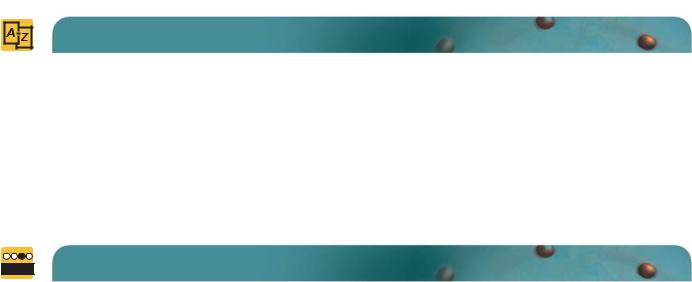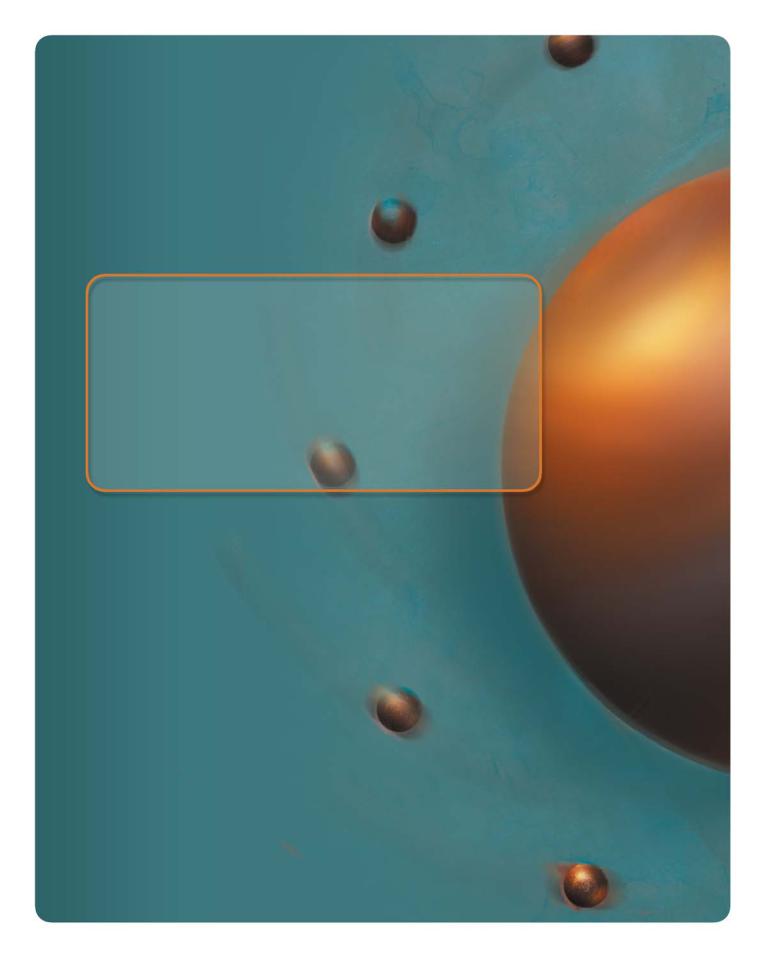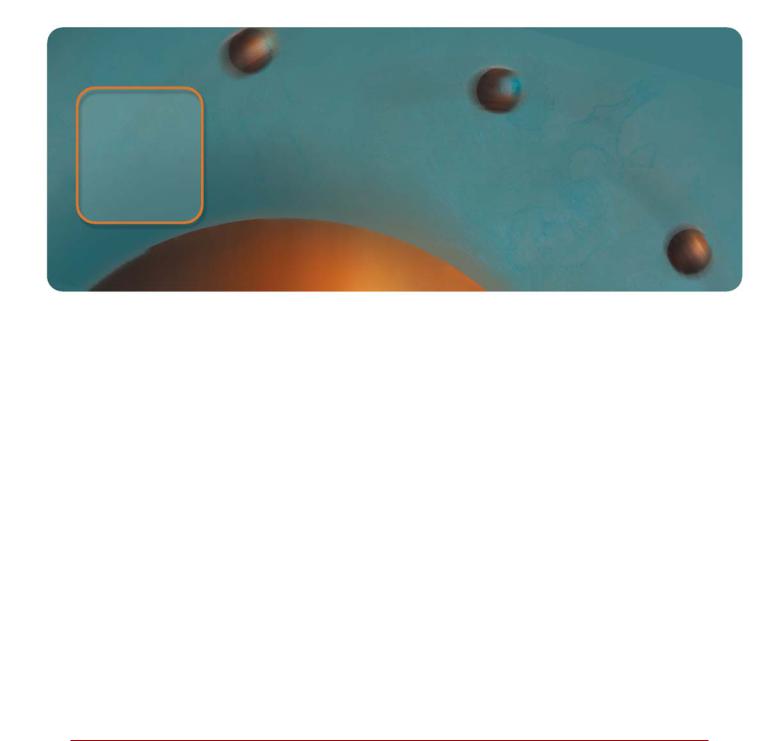
economics_of_money_banking__financial_markets
.pdf
C H A P T E R 3 What Is Money? |
57 |
Substantial revisions in the data do occur; they indicate that initially released money data are not a reliable guide to short-run (say, month-to-month) movements
in the money supply, although they are more reliable over longer periods of time, such as a year.
Key Terms
commodity money, p. 48 |
liquidity, p. 47 |
payments system, p. 48 |
currency, p. 44 |
M1, p. 52 |
smart card, p. 51 |
e-cash, p. 51 |
M2, p. 52 |
store of value, p. 47 |
electronic money (e-money), p. 51 |
M3, p. 53 |
unit of account, p. 46 |
fiat money, p. 48 |
medium of exchange, p. 45 |
wealth, p. 45 |
hyperinflation, p. 47 |
monetary aggregates, p. 52 |
|
income, p. 45 |
|
|
QUIZ Questions and Problems
Questions marked with an asterisk are answered at the end of the book in an appendix, ÒAnswers to Selected Questions and Problems.Ó
1.Which of the following three expressions uses the economistsÕ definition of money?
a.ÒHow much money did you earn last week?Ó
b.ÒWhen I go to the store, I always make sure that I have enough money.Ó
c.ÒThe love of money is the root of all evil.Ó
*2. There are three goods produced in an economy by three individuals:
Good |
Producer |
Apples |
Orchard owner |
Bananas |
Banana grower |
Chocolate |
Chocolatier |
If the orchard owner likes only bananas, the banana grower likes only chocolate, and the chocolatier likes only apples, will any trade between these three persons take place in a barter economy? How will introducing money into the economy benefit these three producers?
3. Why did cavemen not need money?
*4. Why were people in the United States in the nineteenth century sometimes willing to be paid by check
rather than with gold, even though they knew that there was a possibility that the check might bounce?
5.In ancient Greece, why was gold a more likely candidate for use as money than wine was?
*6. Was money a better store of value in the United States in the 1950s than it was in the 1970s? Why or why not? In which period would you have been more willing to hold money?
7.Would you be willing to give up your checkbook and instead use an electronic means of payment if it were made available? Why or why not?
8.Rank the following assets from most liquid to least liquid:
a.Checking account deposits
b.Houses
c.Currency
d.Washing machines
e.Savings deposits
f.Common stock
*9. Why have some economists described money during a hyperinflation as a Òhot potatoÓ that is quickly passed from one person to another?
10.In Brazil, a country that was undergoing a rapid inflation before 1994, many transactions were conducted in dollars rather than in reals, the domestic currency. Why?

58 P A R T I Introduction
*11. Suppose that a researcher discovers that a measure of the total amount of debt in the U.S. economy over the past 20 years was a better predictor of inflation and the business cycle than M1, M2, or M3. Does this discovery mean that we should define money as equal to the total amount of debt in the economy?
12.Look up the M1, M2, and M3 numbers in the Federal Reserve Bulletin for the most recent one-year period. Have their growth rates been similar? What implications do their growth rates have for the conduct of monetary policy?
*13. Which of the Federal ReserveÕs measures of the monetary aggregates, M1, M2, or M3, is composed of the most liquid assets? Which is the largest measure?
14.For each of the following assets, indicate which of the monetary aggregates (M1, M2, M3) includes them:
a.Currency
b.Money market mutual funds
c.Eurodollars
d.Small-denomination time deposits
e.Large-denomination repurchase agreements
f.Checkable deposits
*15. Why are revisions of monetary aggregates less of a problem for measuring long-run movements of the money supply than they are for measuring short-run movements?
Web Exercises
1.Go to www.federalreserve.gov/releases/h6/Current/.
a.What has been the growth rate in M1, M2, and M3 over the last 12 months?
b.From what you know about the state of the economy, does this seem expansionary or restrictive?
2.Go to www.federalreserve.gov/paymentsys.htm and select one topic on which the Federal Reserve has a written policy. Write a one-paragraph summary of this policy.

P a r t I I
Financial
Markets

C h a p t e r
4 Understanding Interest Rates
PREVIEW
www.bloomberg.com /markets/
Under ÒRates & Bonds,Ó you can access information on key interest rates, U.S. Treasuries, Government bonds, and municipal bonds.
Interest rates are among the most closely watched variables in the economy. Their movements are reported almost daily by the news media, because they directly affect our everyday lives and have important consequences for the health of the economy. They affect personal decisions such as whether to consume or save, whether to buy a house, and whether to purchase bonds or put funds into a savings account. Interest rates also affect the economic decisions of businesses and households, such as whether to use their funds to invest in new equipment for factories or to save their money in a bank.
Before we can go on with the study of money, banking, and financial markets, we must understand exactly what the phrase interest rates means. In this chapter, we see that a concept known as the yield to maturity is the most accurate measure of interest rates; the yield to maturity is what economists mean when they use the term interest rate. We discuss how the yield to maturity is measured and examine alternative (but less accurate) ways in which interest rates are quoted. WeÕll also see that a bondÕs interest rate does not necessarily indicate how good an investment the bond is because what it earns (its rate of return) does not necessarily equal its interest rate. Finally, we explore the distinction between real interest rates, which are adjusted for inflation, and nominal interest rates, which are not.
Although learning definitions is not always the most exciting of pursuits, it is important to read carefully and understand the concepts presented in this chapter. Not only are they continually used throughout the remainder of this text, but a firm grasp of these terms will give you a clearer understanding of the role that interest rates play in your life as well as in the general economy.
Measuring Interest Rates
Present Value
Different debt instruments have very different streams of payment with very different timing. Thus we first need to understand how we can compare the value of one kind of debt instrument with another before we see how interest rates are measured. To do this, we make use of the concept of present value.
The concept of present value (or present discounted value) is based on the commonsense notion that a dollar paid to you one year from now is less valuable to you than a dollar paid to you today: This notion is true because you can deposit a dollar in a
61

62 P A R T I I Financial Markets
savings account that earns interest and have more than a dollar in one year. Economists use a more formal definition, as explained in this section.
LetÕs look at the simplest kind of debt instrument, which we will call a simple loan. In this loan, the lender provides the borrower with an amount of funds (called the principal) that must be repaid to the lender at the maturity date, along with an additional payment for the interest. For example, if you made your friend, Jane, a simple loan of $100 for one year, you would require her to repay the principal of $100 in one yearÕs time along with an additional payment for interest; say, $10. In the case of a simple loan like this one, the interest payment divided by the amount of the loan is a natural and sensible way to measure the interest rate. This measure of the socalled simple interest rate, i, is:
i $$10010 0.10 10%
If you make this $100 loan, at the end of the year you would have $110, which can be rewritten as:
$100 (1 0.10) $110
If you then lent out the $110, at the end of the second year you would have:
$110 (1 0.10) $121
or, equivalently,
$100 (1 0.10) (1 0.10) $100 (1 0.10)2 $121
Continuing with the loan again, you would have at the end of the third year:
$121 (1 0.10) $100 (1 0.10)3 $133
Generalizing, we can see that at the end of n years, your $100 would turn into:
$100 (1 i)n
The amounts you would have at the end of each year by making the $100 loan today can be seen in the following timeline:
Today |
Year |
Year |
Year |
|
Year |
|||||
0 |
1 |
2 |
3 |
|
n |
|||||
|
|
|
|
|
|
|
|
|
|
0.10)n |
|
|
|
|
|
|
|
|
|
|
|
$100 |
$110 |
$121 |
$133 |
$100 (1 |
||||||
This timeline immediately tells you that you are just as happy having $100 today as having $110 a year from now (of course, as long as you are sure that Jane will pay you back). Or that you are just as happy having $100 today as having $121 two years from now, or $133 three years from now or $100 (1 0.10)n, n years from now. The timeline tells us that we can also work backward from future amounts to the present: for example, $133 $100 (1 0.10)3 three years from now is worth $100 today, so that:
$133 $100 (1 0.10 )3
The process of calculating todayÕs value of dollars received in the future, as we have done above, is called discounting the future. We can generalize this process by writing

Four Types of
Credit Market
Instruments
C H A P T E R 4 Understanding Interest Rates |
63 |
todayÕs (present) value of $100 as PV, the future value of $133 as FV, and replacing 0.10 (the 10% interest rate) by i. This leads to the following formula:
PV |
FV |
(1) |
(1 i )n |
Intuitively, what Equation 1 tells us is that if you are promised $1 for certain ten years from now, this dollar would not be as valuable to you as $1 is today because if you had the $1 today, you could invest it and end up with more than $1 in ten years.
The concept of present value is extremely useful, because it allows us to figure out todayÕs value (price) of a credit market instrument at a given simple interest rate i by just adding up the individual present values of all the future payments received. This information allows us to compare the value of two instruments with very different timing of their payments.
As an example of how the present value concept can be used, letÕs assume that you just hit the $20 million jackpot in the New York State Lottery, which promises you a payment of $1 million for the next twenty years. You are clearly excited, but have you really won $20 million? No, not in the present value sense. In todayÕs dollars, that $20 million is worth a lot less. If we assume an interest rate of 10% as in the earlier examples, the first payment of $1 million is clearly worth $1 million today, but the next payment next year is only worth $1 million/(1 0.10) $909,090, a lot less than $1 million. The following year the payment is worth $1 million/(1 0.10)2 $826,446 in todayÕs dollars, and so on. When you add all these up, they come to $9.4 million. You are still pretty excited (who wouldnÕt be?), but because you understand the concept of present value, you recognize that you are the victim of false advertising. You didnÕt really win $20 million, but instead won less than half as much.
In terms of the timing of their payments, there are four basic types of credit market instruments.
1. A simple loan, which we have already discussed, in which the lender provides the borrower with an amount of funds, which must be repaid to the lender at the maturity date along with an additional payment for the interest. Many money market instruments are of this type: for example, commercial loans to businesses.
2. A fixed-payment loan (which is also called a fully amortized loan) in which the lender provides the borrower with an amount of funds, which must be repaid by making the same payment every period (such as a month), consisting of part of the principal and interest for a set number of years. For example, if you borrowed $1,000, a fixed-payment loan might require you to pay $126 every year for 25 years. Installment loans (such as auto loans) and mortgages are frequently of the fixed-payment type.
3. A coupon bond pays the owner of the bond a fixed interest payment (coupon payment) every year until the maturity date, when a specified final amount (face value or par value) is repaid. The coupon payment is so named because the bondholder used to obtain payment by clipping a coupon off the bond and sending it to the bond issuer, who then sent the payment to the holder. Nowadays, it is no longer necessary to send in coupons to receive these payments. A coupon bond with $1,000 face value, for example, might pay you a coupon payment of $100 per year for ten years, and at the maturity date repay you the face value amount of $1,000. (The face value of a bond is usually in $1,000 increments.)
A coupon bond is identified by three pieces of information. First is the corporation or government agency that issues the bond. Second is the maturity date of the

64 P A R T I I Financial Markets
Yield to Maturity
bond. Third is the bondÕs coupon rate, the dollar amount of the yearly coupon payment expressed as a percentage of the face value of the bond. In our example, the coupon bond has a yearly coupon payment of $100 and a face value of $1,000. The coupon rate is then $100/$1,000 0.10, or 10%. Capital market instruments such as U.S. Treasury bonds and notes and corporate bonds are examples of coupon bonds.
4. A discount bond (also called a zero-coupon bond) is bought at a price below its face value (at a discount), and the face value is repaid at the maturity date. Unlike a coupon bond, a discount bond does not make any interest payments; it just pays off the face value. For example, a discount bond with a face value of $1,000 might be bought for $900; in a yearÕs time the owner would be repaid the face value of $1,000. U.S. Treasury bills, U.S. savings bonds, and long-term zero-coupon bonds are examples of discount bonds.
These four types of instruments require payments at different times: Simple loans and discount bonds make payment only at their maturity dates, whereas fixed-payment loans and coupon bonds have payments periodically until maturity. How would you decide which of these instruments provides you with more income? They all seem so different because they make payments at different times. To solve this problem, we use the concept of present value, explained earlier, to provide us with a procedure for measuring interest rates on these different types of instruments.
Of the several common ways of calculating interest rates, the most important is the yield to maturity, the interest rate that equates the present value of payments received from a debt instrument with its value today.1 Because the concept behind the calculation of the yield to maturity makes good economic sense, economists consider it the most accurate measure of interest rates.
To understand the yield to maturity better, we now look at how it is calculated for the four types of credit market instruments.
Simple Loan. Using the concept of present value, the yield to maturity on a simple loan is easy to calculate. For the one-year loan we discussed, todayÕs value is $100, and the payments in one yearÕs time would be $110 (the repayment of $100 plus the interest payment of $10). We can use this information to solve for the yield to maturity i by recognizing that the present value of the future payments must equal todayÕs value of a loan. Making todayÕs value of the loan ($100) equal to the present value of the $110 payment in a year (using Equation 1) gives us:
|
$100 |
|
$110 |
|
|
|||
|
|
1 i |
|
|||||
|
|
|
|
|
|
|||
Solving for i, |
|
|
|
|
|
|
|
|
i |
$110 $100 |
|
|
$10 |
0.10 |
10% |
||
|
|
|
||||||
$100 |
$100 |
|||||||
This calculation of the yield to maturity should look familiar, because it equals the interest payment of $10 divided by the loan amount of $100; that is, it equals the simple interest rate on the loan. An important point to recognize is that for simple loans, the simple interest rate equals the yield to maturity. Hence the same term i is used to denote both the yield to maturity and the simple interest rate.
1In other contexts, it is also called the internal rate of return.

|
C H A P T E R 4 |
Understanding Interest Rates |
65 |
Study Guide |
The key to understanding the calculation of the yield to maturity is equating todayÕs |
||
|
value of the debt instrument with the present value of all of its future payments. The |
||
|
best way to learn this principle is to apply it to other specific examples of the four types |
||
of credit market instruments in addition to those we discuss here. See if you can develop the equations that would allow you to solve for the yield to maturity in each case.
Fixed-Payment Loan. Recall that this type of loan has the same payment every period throughout the life of the loan. On a fixed-rate mortgage, for example, the borrower makes the same payment to the bank every month until the maturity date, when the loan will be completely paid off. To calculate the yield to maturity for a fixed-payment loan, we follow the same strategy we used for the simple loanÑwe equate todayÕs value of the loan with its present value. Because the fixed-payment loan involves more than one payment, the present value of the fixed-payment loan is calculated as the sum of the present values of all payments (using Equation 1).
In the case of our earlier example, the loan is $1,000 and the yearly payment is $126 for the next 25 years. The present value is calculated as follows: At the end of one year, there is a $126 payment with a PV of $126/(1 i); at the end of two years, there is another $126 payment with a PV of $126/(1 i)2; and so on until at the end of the twenty-fifth year, the last payment of $126 with a PV of $126/(1 i)25 is made. Making todayÕs value of the loan ($1,000) equal to the sum of the present values of all the yearly payments gives us:
|
$1,000 |
$126 |
|
$126 |
|
|
$126 |
|
. . . |
$126 |
|
||||||
|
1 i |
(1 i )2 |
(1 i )3 |
(1 i )25 |
|
||||||||||||
|
|
|
|
|
|
|
|
|
|
||||||||
More generally, for any fixed-payment loan, |
|
|
|
|
|
|
|||||||||||
|
LV |
|
FP |
|
|
FP |
|
|
FP |
. . . |
|
FP |
|
(2) |
|||
|
|
|
(1 i )2 |
(1 i )3 |
(1 i )n |
||||||||||||
|
1 |
i |
|
|
|
|
|
|
|||||||||
where |
LV loan value |
|
|
|
|
|
|
|
|
|
|
||||||
|
FP fixed yearly payment |
|
|
|
|
|
|
||||||||||
|
|
n number of years until maturity |
|
|
|
|
|||||||||||
For a fixed-payment loan amount, the fixed yearly payment and the number of years until maturity are known quantities, and only the yield to maturity is not. So we can solve this equation for the yield to maturity i. Because this calculation is not easy, many pocket calculators have programs that allow you to find i given the loanÕs numbers for LV, FP, and n. For example, in the case of the 25-year loan with yearly payments of $126, the yield to maturity that solves Equation 2 is 12%. Real estate brokers always have a pocket calculator that can solve such equations so that they can immediately tell the prospective house buyer exactly what the yearly (or monthly) payments will be if the house purchase is financed by taking out a mortgage.2
Coupon Bond. To calculate the yield to maturity for a coupon bond, follow the same strategy used for the fixed-payment loan: Equate todayÕs value of the bond with its present value. Because coupon bonds also have more than one payment, the present
2The calculation with a pocket calculator programmed for this purpose requires simply that you enter the value of the loan LV, the number of years to maturity n, and the interest rate i and then run the program.

66 P A R T I I Financial Markets
value of the bond is calculated as the sum of the present values of all the coupon payments plus the present value of the final payment of the face value of the bond.
The present value of a $1,000-face-value bond with ten years to maturity and yearly coupon payments of $100 (a 10% coupon rate) can be calculated as follows: At the end of one year, there is a $100 coupon payment with a PV of $100/(1 i ); at the end of the second year, there is another $100 coupon payment with a PV of $100/(1 i )2; and so on until at maturity, there is a $100 coupon payment with a PV of $100/(1 i )10 plus the repayment of the $1,000 face value with a PV of $1,000/(1 i )10. Setting todayÕs value of the bond (its current price, denoted by P) equal to the sum of the present values of all the payments for this bond gives:
P |
$100 |
|
|
$100 |
|
$100 |
|
|
. . . |
$100 |
|
|
|
|
$1,000 |
|
|
|||||||||||
1 |
i |
2 |
(1 i ) |
3 |
|
(1 |
i ) |
10 |
|
(1 i ) |
10 |
|
||||||||||||||||
|
|
(1 i ) |
|
|
|
|
|
|
|
|
|
|
|
|
|
|||||||||||||
More generally, for any coupon bond,3 |
|
|
|
|
|
|
|
|
|
|
|
|
|
|
|
|
||||||||||||
P |
|
|
C |
|
|
C |
|
|
|
C |
|
|
. . . |
|
|
C |
|
|
|
|
|
F |
|
|
(3) |
|||
|
1 i |
|
(1 i ) |
2 |
|
(1 i ) |
3 |
|
|
i ) |
n |
|
(1 i ) |
n |
||||||||||||||
|
|
|
|
|
|
|
|
|
(1 |
|
|
|
|
|
|
|
||||||||||||
where |
|
|
|
|
|
|
P price of coupon bond |
|
|
|
|
|
|
|
|
|
|
|
|
|
|
|||||||
|
|
|
|
|
|
|
C yearly coupon payment |
|
|
|
|
|
|
|
|
|
|
|
|
|
|
|||||||
F face value of the bond n years to maturity date
In Equation 3, the coupon payment, the face value, the years to maturity, and the price of the bond are known quantities, and only the yield to maturity is not. Hence we can solve this equation for the yield to maturity i. Just as in the case of the fixedpayment loan, this calculation is not easy, so business-oriented pocket calculators have built-in programs that solve this equation for you.4
LetÕs look at some examples of the solution for the yield to maturity on our 10%- coupon-rate bond that matures in ten years. If the purchase price of the bond is $1,000, then either using a pocket calculator with the built-in program or looking at a bond table, we will find that the yield to maturity is 10 percent. If the price is $900, we find that the yield to maturity is 11.75%. Table 1 shows the yields to maturity calculated for several bond prices.
Table 1 Yields to Maturity on a 10%-Coupon-Rate Bond Maturing in Ten
Years (Face Value = $1,000)
Price of Bond ($) |
Yield to Maturity (%) |
1,200 |
7.13 |
1,100 |
8.48 |
1,000 |
10.00 |
900 |
11.75 |
800 |
13.81 |
|
|
|
|
3Most coupon bonds actually make coupon payments on a semiannual basis rather than once a year as assumed here. The effect on the calculations is only very slight and will be ignored here.
4The calculation of a bondÕs yield to maturity with the programmed pocket calculator requires simply that you enter the amount of the yearly coupon payment C, the face value F, the number of years to maturity n, and the price of the bond P and then run the program.
